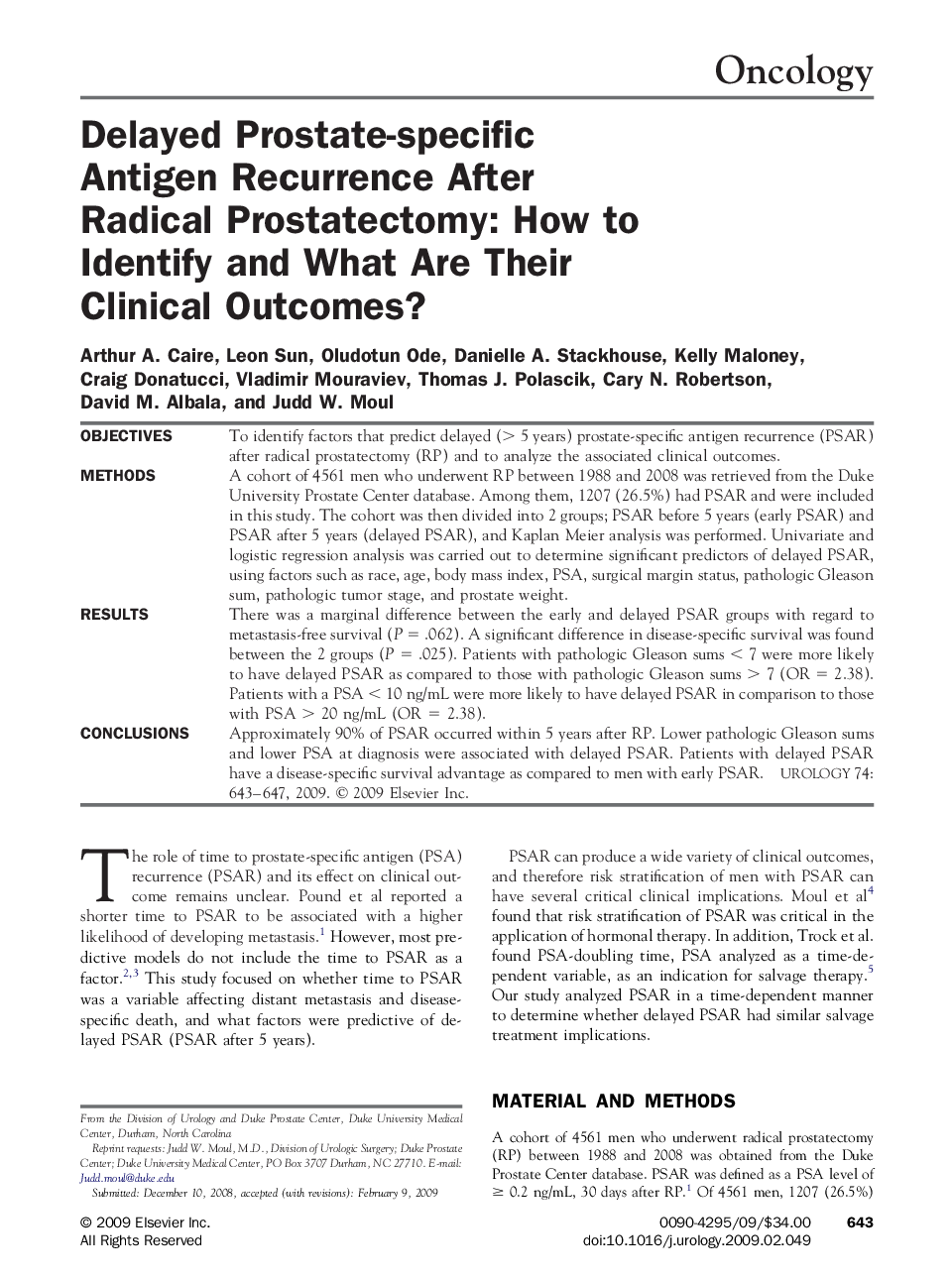| کد مقاله | کد نشریه | سال انتشار | مقاله انگلیسی | نسخه تمام متن |
|---|---|---|---|---|
| 3904079 | 1250386 | 2009 | 5 صفحه PDF | دانلود رایگان |

ObjectivesTo identify factors that predict delayed (> 5 years) prostate-specific antigen recurrence (PSAR) after radical prostatectomy (RP) and to analyze the associated clinical outcomes.MethodsA cohort of 4561 men who underwent RP between 1988 and 2008 was retrieved from the Duke University Prostate Center database. Among them, 1207 (26.5%) had PSAR and were included in this study. The cohort was then divided into 2 groups; PSAR before 5 years (early PSAR) and PSAR after 5 years (delayed PSAR), and Kaplan Meier analysis was performed. Univariate and logistic regression analysis was carried out to determine significant predictors of delayed PSAR, using factors such as race, age, body mass index, PSA, surgical margin status, pathologic Gleason sum, pathologic tumor stage, and prostate weight.ResultsThere was a marginal difference between the early and delayed PSAR groups with regard to metastasis-free survival (P = .062). A significant difference in disease-specific survival was found between the 2 groups (P = .025). Patients with pathologic Gleason sums < 7 were more likely to have delayed PSAR as compared to those with pathologic Gleason sums > 7 (OR = 2.38). Patients with a PSA < 10 ng/mL were more likely to have delayed PSAR in comparison to those with PSA > 20 ng/mL (OR = 2.38).ConclusionsApproximately 90% of PSAR occurred within 5 years after RP. Lower pathologic Gleason sums and lower PSA at diagnosis were associated with delayed PSAR. Patients with delayed PSAR have a disease-specific survival advantage as compared to men with early PSAR.
Journal: Urology - Volume 74, Issue 3, September 2009, Pages 643–647